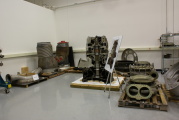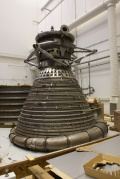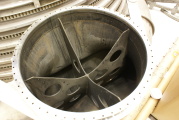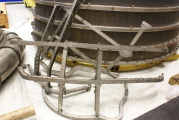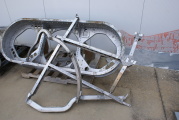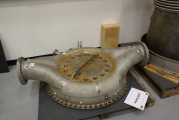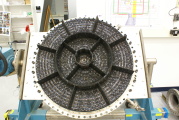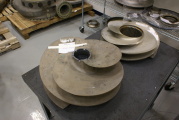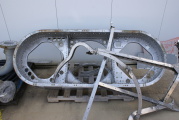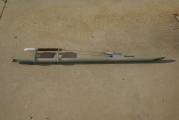F-1 Engine Disassembly
In mid-September 2011, a team at Marshall Space Flight Center started disassembling F-1 engine F-6090 (which I photographed by the Static Test Tower in October 2008).
The Marshall team disassembled the engine to learn how it operated and to become knowledgeable about large liquid oxygen/hydrocarbon engines so that they're prepared for future programs. With the announcement in April 2012 that a Huntsville-based aerospace consulting firm is studying the possibility of restarting F-1 production for the Space Launch System, this effort couldn't have been better timed.
The F-1 disassembly started in mid-September 2011 and the engine-level disassembly took 7 weeks to complete. They used structured light scanning to scan the engine before disassembling it, and scanned each individual component as it was removed to fully characterize the engine. (Many components sported white dots, similar to those used in motion capture for movie special effects.) Everything was fully documented and preserved as it was taken apart so that the engine could be fully or partially reassembled if required.
I found out about this project when I was in Huntsville in June 2012. I made a few calls to MSFC, but it turned out that the project manager was out of the office. Unfortunately, I had to leave Huntsville prior to her return, but we soon worked out another visit in July so that I could photograph the engine components.
When I first heard about this, I envisioned something like the F-1 engine tear-down which took place after the Qual Testing during the F-1 development process, and I wasn't too far off (although the smaller components were stored on shelves, rather than arranged on tables).
Additional information about the tear-down effort can be found in the January 25, 2012 Marshall Star or in Resurrecting the F-1 – 3D Scanning to Digitally Capture the Saturn V Main Engine.
During my 2013 and 2014 trips to MSFC, I found a number of F-1 rocket engine components behind Building 4205. At least some of those parts appear to be from F-6090, and so appear here.
